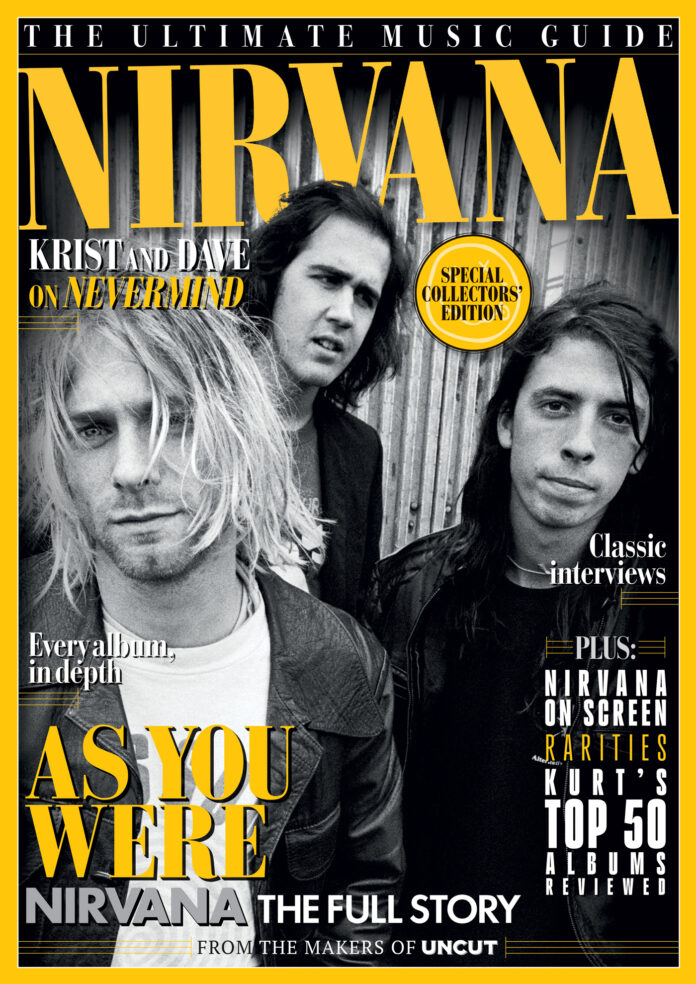Nirvana‘s ambition, Dave Grohl tells Uncut’s Graeme Thomson in this new magazine, was to sell as many records as Sonic Youth and maybe be able to make enough money for the members of Nirvana to get their own apartments.
Of course, what happened with Nevermind surpassed that ambition, to put it mildly. When the album was released in autumn 1991, it sold enough copies for the band to be able to buy apartments for themselves, and in principle, one for everyone they’d ever met besides.
Anyone acquainted with the Nirvana story will be aware of the complex and ultimately fatal relationship that Kurt Cobain had with that kind of fame. But as you’ll read in the in-depth reviews and classic interviews in this new magazine, this was never – confusingly perhaps in a time when words like “loser” and “slacker” were in everyday parlance, when many US bands dressed as if they arrived on stage direct from farm or sawmill – a band content with underachievement.
As Sub Pop’s Jonathan Poneman tells me in a new piece you can read here, Nirvana were driven by a desire not for material success, (“as in ‘now I’m going to buy a bunch of Rolls Royces’”) but for something more imprecise and unknowable: to evolve fast and do the best they possibly could. Kurt Cobain’s very first recordings were made in the spirit of simply leaving some kind of record. The band’s first album offered tantalising hints of untapped potential, precious resources on the point of being uncovered, if not yet polished to the gleam of their second. By their third, they wanted to reassert that their gritty ethos remained intact.
The success and ideological problems which came with their success became part of Nirvana’s music and day to day life, to the point where this magazine is published around the 30th anniversary of Kurt Cobain taking his own life. Kurt’s story which we’ve told in contemporary features and news reports, and even at this remove, it still seems desperately sad, but one through which the life force of the music continues to burn brightly.
Get your copy here.


